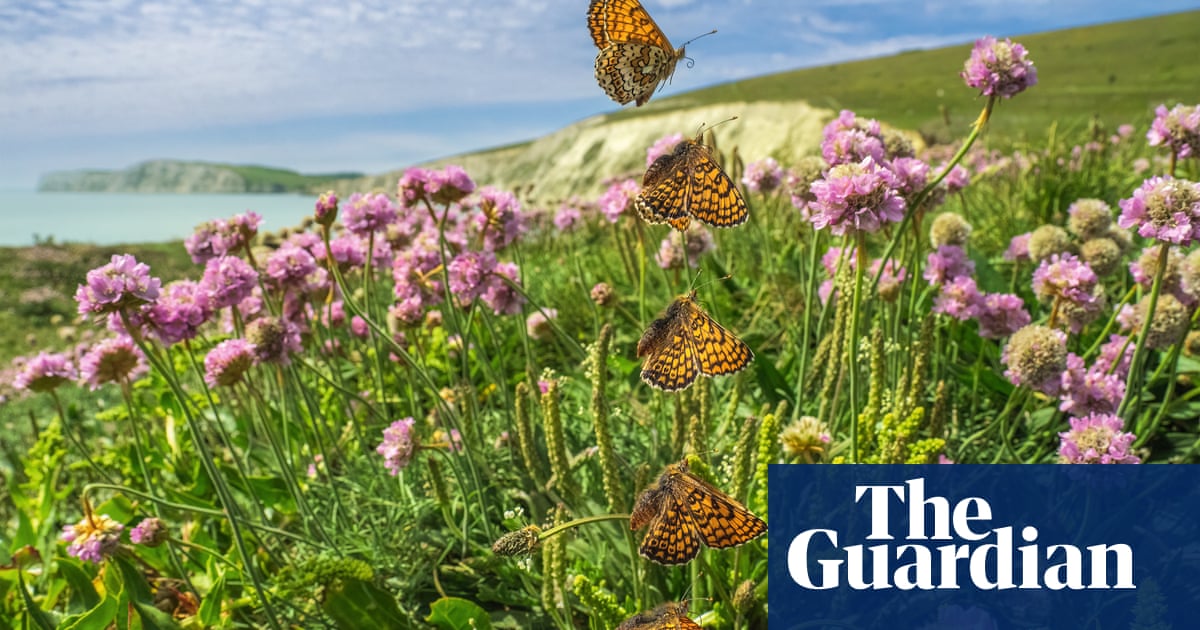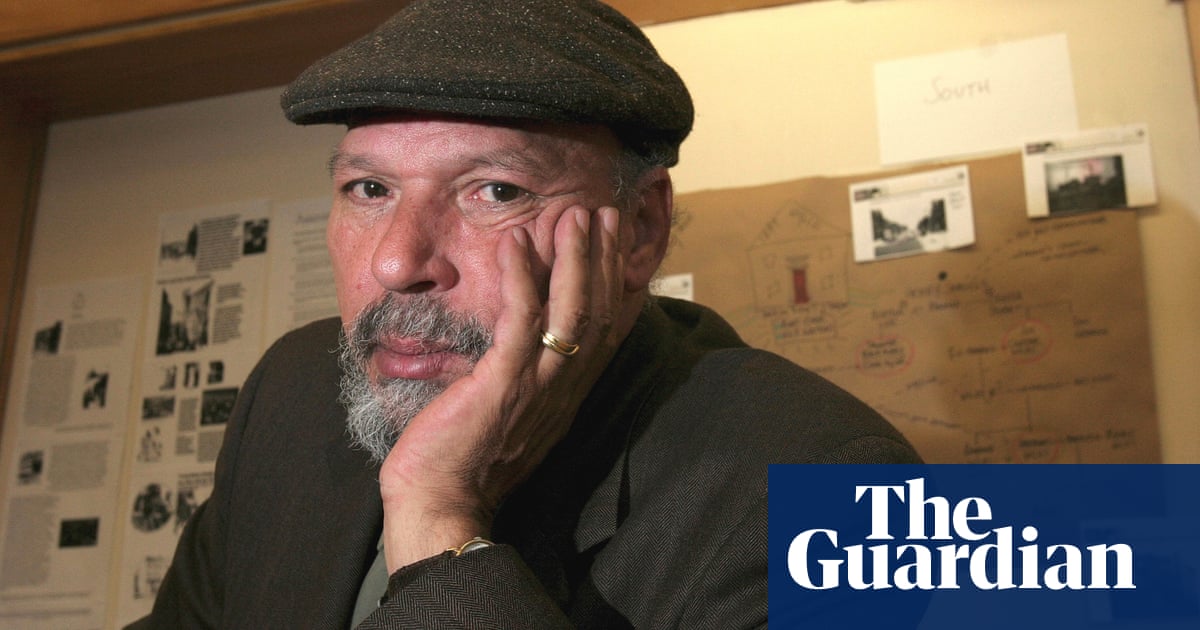
Five years ago, at summer’s end, Andrew Fusek Peters was diagnosed with bowel cancer. “I was waiting for surgery, feeling really ill, sitting in my garden. It was amazing weather and there were painted lady butterflies everywhere,” he says. “They were a symbol of fragile life, of hope and defiance, and something appealed to my soul.”
A children’s author and poet who had become a keen amateur photographer, as Peters watched the butterflies and idly wondered if he could capture them in flight. It swiftly became an obsession as he recovered from a successful operation to remove the cancer. In recent summers, he has travelled the length and breadth of Britain to photograph all 58 native species of butterfly, from the ubiquitous small tortoiseshell to the rare and elusive high brown fritillary. Now the fruits of those summers have been published in a beautiful new book.
Britain has relatively few butterfly species compared with mainland Europe and 80% are in decline, mostly because intensive chemical farming has reduced many species to tiny fragments of habitat and small nature reserves. Global heating is benefiting some species but others are too isolated to find suitable new habitat, and gardening habits – paving over gardens and using pesticides – aren’t helping either. Butterflies may not pollinate as many plants as wild bees and hoverflies, but because British butterflies are the best-studied group of insects in the world, they are an extremely useful indicator of the wider declines in flying insects.
Peters’ signature shot – variations of which have now been published in international newspapers and magazines – is a butterfly “take-off”, showing the multiple wing-beats of one butterfly in one frame as it lifts off from a flower.
How does he capture it? Technology helps. A typical digital SLR camera shoots 20 frames a second. He uses a high-speed OM System (formerly Olympus) which shoots 120 frames a second.
A butterfly takes off so quickly it is still impossible to react quickly enough to capture that take-off but if he half-presses the shutter, the camera saves the 70 previous frames before the moment he actually takes the picture. “It’s time travel, so I don’t miss the moment of take-off,” he says. After he’s captured the butterfly taking off, he layers 10 to 15 frames together in Photoshop.
That makes it sound easy, and artificial, but Peters insists it is still a massive challenge. He typically takes between 10,000 and 20,000 shots to get one butterfly take-off sequence in focus. At such high shutter speeds, the depth of field is tiny, and as butterflies do not fly in a straight line they swiftly flutter out of focus. As well as thousands of attempts, it takes patience and fieldcraft to anticipate a butterfly’s likely flight-line – and catch it – in focus.
Peters photographed some of the more common species including holly blues, brimstones, red admirals and small tortoiseshells in his Shropshire garden. “I hope my book inspires people to encourage butterflies into their garden,” he says. “People complain about flowers such as valerian but please don’t remove it, the butterflies love its nectar. And garlic mustard – is it a weed? No, it’s not and you might even get orange tips breeding on it.”
Peters also likes to photograph butterflies in a landscape, celebrating the beauty of their surroundings as well as the insects themselves. His pictures of a Glanville fritillary rising from the sea-pinks beside the chalk cliffs of Compton Bay on the Isle of Wight are particularly glorious. These take-off shots are even more challenging because they require a wide-angle lens, which means he must be less than 2cm from the butterfly. It’s incredibly difficult to get that close to a skittish, sun-warmed insect. Unlike some photographers, who “cheat” by keeping insects in a fridge to slow them down, Peters refuses to tamper with wild butterflies.
So what’s the appeal of a long, sweaty day in pursuit of an elusive, fast-moving wild animal? “It just feels bloody brilliant,” says Peters. “If I’ve had a full day of good encounters with butterflies, met interesting butterfly people and I’ve got some good shots, that becomes a vault in my spiritual bank. It’s a happy feeling.”
Butterfly Safari by Andrew Fusek Peters is published on 15 March (£30, Bird Eye Books/Graffeg). To order a copy for £26.40 go to guardianbookshop.com. Delivery charges may apply
Five plants to encourage butterflies
Valerian and verbena
These pink and purple- flowers will re-seed and pop up everywhere once you’ve introduced them to your garden. A hugely popular nectar source for butterflies and others insects, they thrive in dry, sunny spots, even growing in walls and pavement cracks, so ideal for urban yards.
Buddleia
The ubiquitous butterfly bush is well known for providing nectar (although some varieties are better than others). Cut back hard in April to stimulate later flowering in late summer, which is more useful for soon-to-hibernate butterflies. Buddleia is an “invasive” non-native species, so shouldn’t be planted in wild settings.
Garlic mustard or jack-by-the-hedge
Providing nectar is one thing, but what really helps butterflies is caterpillars’ food plants. This creamy spring flower is dismissed as a “weed” but hosts orange tip caterpillars – look out for them in June. They hibernate on plants in chrysalis form so don’t be an overly tidy gardener and accidentally clear them away!
Holly and ivy
Native ivy grows in small urban back yards and both it and holly are the food plant of the holly blue. Allow ivy to flower in late autumn and it provides valuable nectar for the red admiral before it hibernates.
Alder buckthorn or buckthorn
A shrubby native tree which can be trimmed and incorporated into hedges, this is the food plant of the brimstone caterpillar. Spot the camouflaged caterpillars devouring the tender new leaves in May and June.












